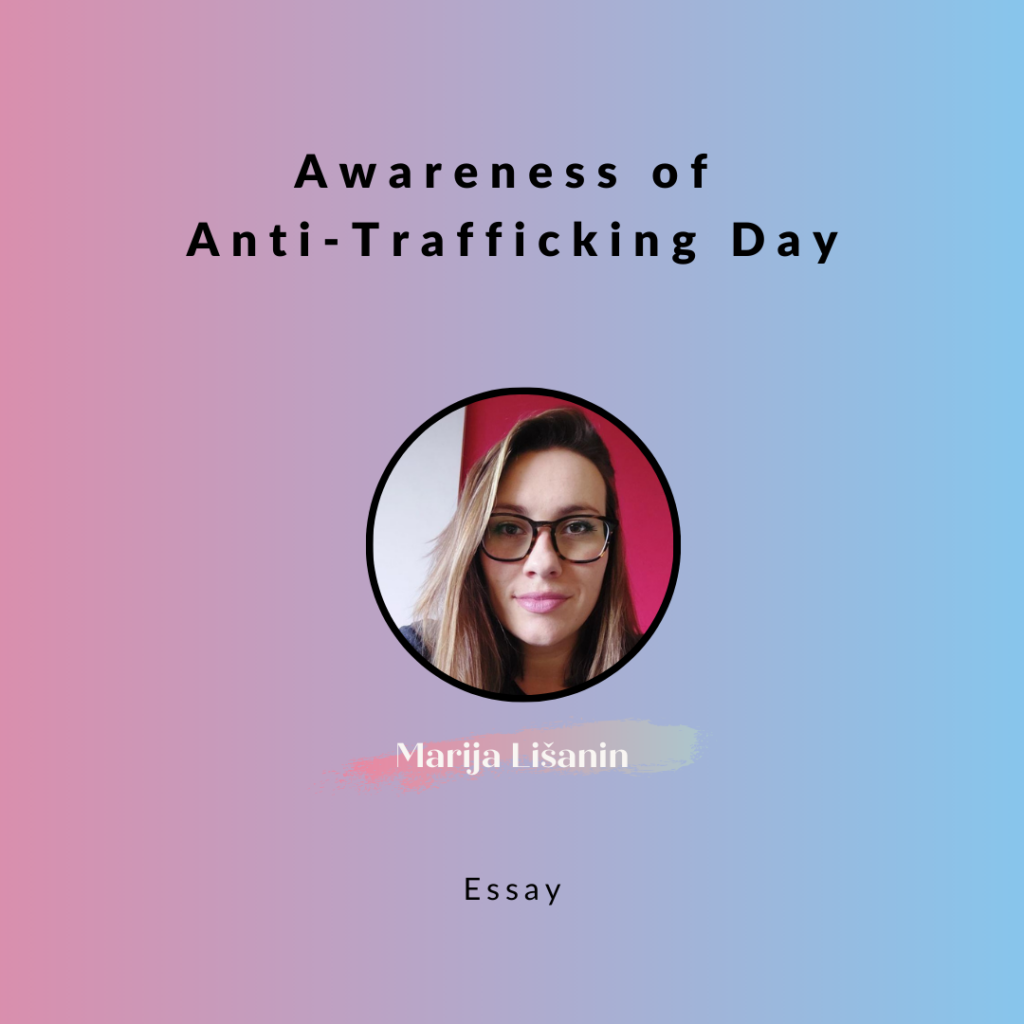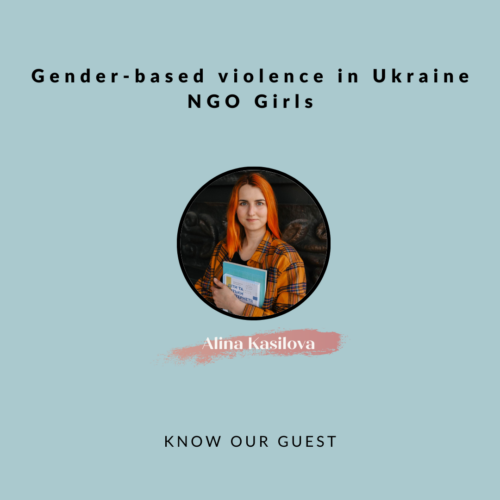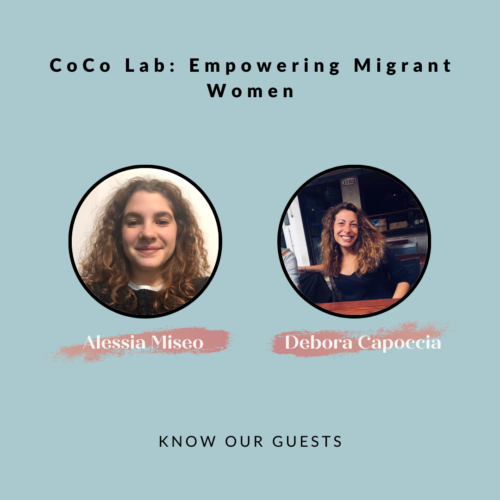
We have to be aware of our society’s problems. One of them is human trafficking.
Human Trafficking is the recruitment, transportation, transfer, harboring or receipt of people through force, fraud or deception to exploit them for profit. Men, women and children of all ages and backgrounds can become victims of this crime, which occurs in every region of the world. The traffickers often use violence or fraudulent employment agencies and fake promises of education and job opportunities to trick and coerce their victims.
EU Anti-Trafficking Day
This week of October is dedicated to raising awareness of the human trafficking problem.
18th of October is the EU Anti-trafficking Day. The main purpose is to raise awareness of trafficking in human beings and increases the exchange of information, knowledge and best practices among different actors working in the field.
What is human trafficking?
Human trafficking, also called trafficking in persons, is a form of modern-day slavery involving the illegal transport of individuals by force or deception for labour, sexual exploitation, or activities in which traffickers benefit financially. Human trafficking is a global problem affecting people of all ages. It is estimated that approximately 1,000,000 people are trafficked each year globally, and between 20,000 and 50,000 are trafficked into the United States, which is one of the largest destinations for victims of the sex trafficking trade.
Although human trafficking is recognized as a growing international phenomenon, one with a long history (see the story of St. Josephine Bakhita, the patron saint of Sudan and victims of human trafficking), a uniform definition has yet to be internationally adopted. The United Nations (UN) divides human trafficking into three categories: sex trafficking, labour trafficking, and the removal of organs, and defines human trafficking as the induction by force, fraud, or coercion of a person to engage in the sex trade, or the harboring, transportation, or obtaining of a person for labour service or organ removal.
The trafficking scheme
Human traffickers often create transnational routes for transporting migrants driven by unfavorable living conditions to seek the services of a smuggler. Human trafficking usually starts in origin countries – namely, Southeast Asia, Eastern Europe, and sub-Saharan Africa where recruiters seek migrants through various mediums such as the Internet, employment agencies, media, and local contacts. Middlemen who recruit from within the origin country commonly share the cultural background of those migrating. Migrants view the services of a smuggler as an opportunity to move from impoverished conditions in their home countries to more stable, developed environments.
Because such circumstances make it difficult for victims to obtain legitimate travel documents, smugglers supply migrants with fraudulent passports or visas and advise them to avoid detection by border-control agents. Transporters, in turn, sustain the migration process through various modes of transportation: land, air, and sea. Although victims often leave their destination country voluntarily, the majority are unaware they are being recruited for a trafficking scheme.
Types of exploitation
The most prevalent form of human trafficking that results in servitude is the recruitment and transport of people into the international sex industry. Sex slavery involves males and females, both adults and children and constitutes an estimated 58 per cent of all trafficking activities. It consists of different types of servitude, including forced prostitution, pornography, child sex rings, and sex-related occupations such as nude dancing and modeling. Forced prostitution is a very old form of enslavement, and recruitment into this lifestyle is often a booming business for purveyors of the sex trade. Victims of sexual slavery are often manipulated into believing they are being relocated to work in legitimate forms of employment. Those who enter the sex industry as prostitutes are exposed to inhumane and potentially fatal conditions, especially with the prevalence of HIV/AIDS.
Forced labour has been likely around since shortly after the dawn of humankind, though several different forms of modern involuntary servitude can go easily unnoticed by the general public. Debt bondage (also called peonage) is the enslavement of people for unpaid debts and is one of the most common forms of contemporary forced labour.
Similarly, contract slavery uses false or deceptive contracts to justify or explain forced slavery. In the United States, the majority of non-sex laborers are forced into domestic service, followed by agriculture, sweatshops, and restaurant and hotel work.
Children are often sold or sent to areas with the promise of a better life but instead encounter various forms of exploitation. Domestic servitude places “extra children” (children from excessively large families) into domestic service, often for extended periods. Other trafficked children are forced to work in small-scale cottage industries, manufacturing operations, or the entertainment and sex industry. They are required to work for excessive periods, under hazardous working conditions, and for little or no wages. Sometimes, they become “street children” and are used for prostitution, theft, begging, or the drug trade. Children are also trafficked into military service as soldiers and experience armed combat at very young ages.
Another recent and highly controversial occurrence involving human trafficking is the abduction or deception that results in the involuntary removal of bodily organs for transplant. For years, there have been reports from China that human organs were harvested from executed prisoners without the consent of family members and sold to transplant recipients in various countries. Medical and hospital employees reported incidents of the removal and transport of organs. In addition, there have been claims that impoverished people sell organs such as kidneys for cash or collateral. Although there have been some allegations of trafficking of human fetuses for use in the cosmetics and drug industry, these reports have not been substantiated. In recent years, the Internet has been used as a medium for the donors and recipients of organ trafficking, whether legal or not.
Human trafficking as organized crime
Human trafficking is a highly structured and organized criminal activity. Criminal enterprises need to transport a large number of migrants over long distances, have a well-organized plan to execute the various stages of the crime, and possess a substantial amount of money for such undertakings. Human traffickers have developed a multibillion-dollar industry by exploiting those forced or willing to migrate. For this reason, migrant trafficking is increasingly recognized as a form of organized crime.
Trafficking networks may encompass anything from a few loosely associated freelance criminals to large organized criminal groups acting in concert. Human trafficking is a lucrative criminal activity, touted as the third most profitable business after drugs and arms trade, at an estimated $32 billion per year. In fact, narcotics trafficking and human trafficking are often intertwined, using the same actors and routes into a country.
Migrant trafficking is one of the fastest-growing criminal enterprises. Traffickers resort to other illicit activities to legitimize their proceeds, such as laundering the money obtained not only from trafficking but also from forced labour, sex industries, and the drug trade. To protect their investment, traffickers use terroristic threats as a means of control over their victims and demonstrate power through the threat of deportation, the seizing of travel documentation, or violence against the migrants and their family members remaining in the origin country.
Data on human trafficking in Europe
The Counter Trafficking Data Collaborative (CTDC) is the first global data hub on human trafficking, with data contributed by organizations from around the world. These are only registered cases but many cases likely remain undetected.
In 2021, the number of registered victims of trafficking in human beings in the EU was nearly back on the pre-pandemic level with 7,155 victims, which is still 8% lower than the number of registrations in 2019. The actual number of victims is likely significantly higher than reported data suggests, as these statistics only capture victims that become known to one of the registering entities.
For the EU, 44% of the registered victims were nationals of the reporting country, which is a significant increase of about 5.2% compared to 2019-2020. The share of non-EU nationals was 41%, which is a slight decrease compared to 2019-2020, with a share of 43%. In 2021, 68.4% of registered victims of trafficking in human beings in the EU were women or girls.
Sexual exploitation was still the predominant form of exploitation in 2021, at 56%, although the prevalence is lower than in the 2008-2019 period (65.9% on average). Labour exploitation was 29% in 2021, slightly lower than in 2019 and 2020 (31.8%) but still higher than in previous years. Other exploitative purposes, including use for benefit fraud, criminal activities and forced begging, were at 15.8% in 2021, which is about 5% higher than in 2019-2020. The number of suspected traffickers rose by 12.5% in 2021 compared with 2020, and the number of convicted traffickers increased by 54.9% in 2021 compared with 2020.
Prevention and control of human trafficking
Foreign governments are to make a sustained effort to cooperate with the international community, assist in the prosecution of traffickers, and protect victims of trafficking. If governments fail to meet the minimum standards or make strides to do so, the United States may cease financial assistance beyond humanitarian and trade-related aid.
Furthermore, these countries will face opposition from the United States in obtaining support from financial institutions such as the World Bank and the International Monetary Fund. The U.S. Department of State annually reports anti-trafficking efforts in the Trafficking in Persons Report on countries considered to have a significant trafficking problem.
A message from the EU Anti-Trafficking Coordinator, Diane Schmitt: “Let’s not forget human trafficking in conflict. War creates vulnerabilities exploited by ruthless traffickers”.
by Marija Lišanin
Resources
https://home-affairs.ec.europa.eu/news/18th-october-eu-anti-trafficking-day-2022-10-18_en
Human trafficking | Definition, Tactics, Statistics, Types, Examples, & Facts | Britannica
CTDC (ctdatacollaborative.org)



